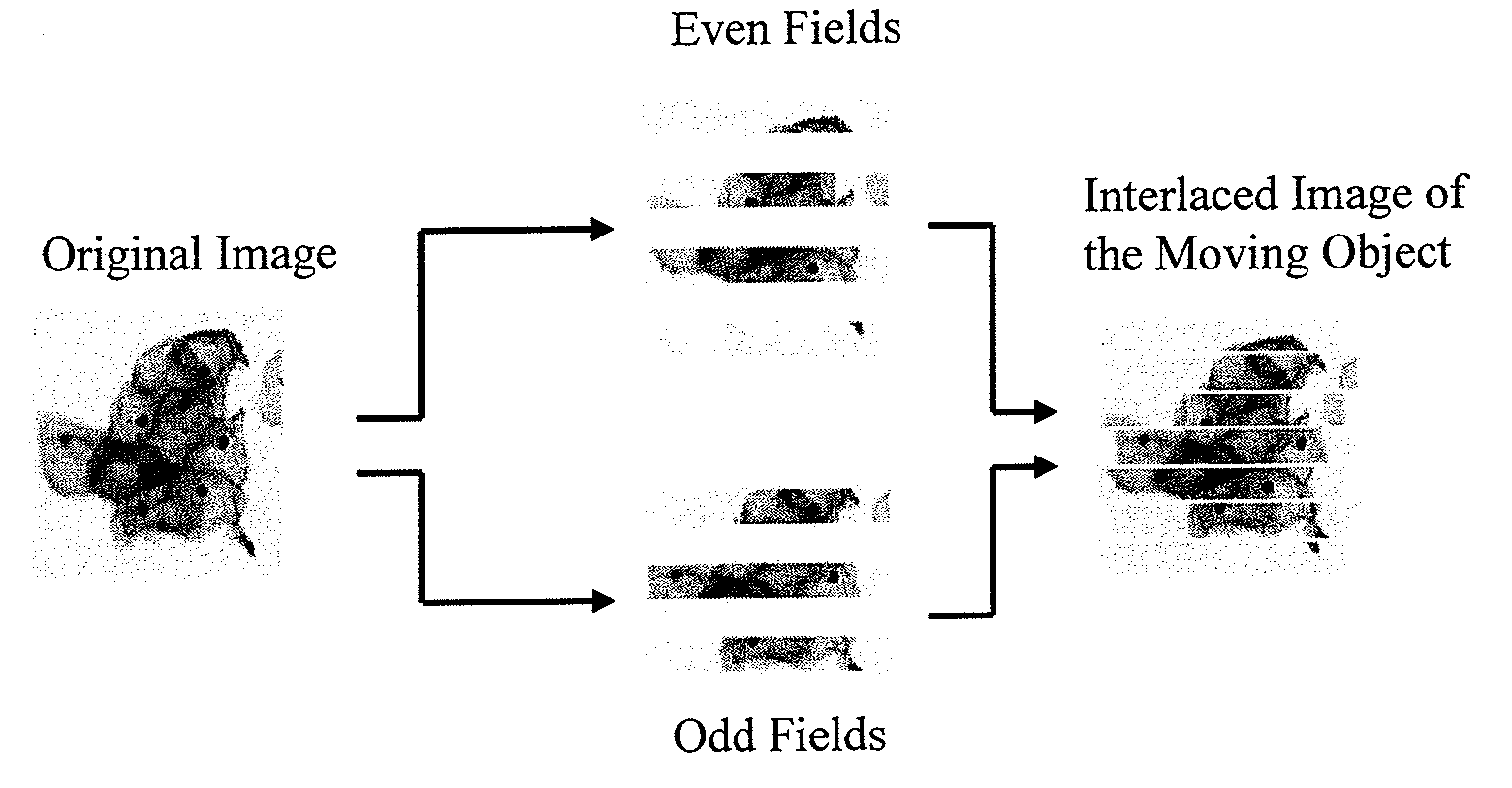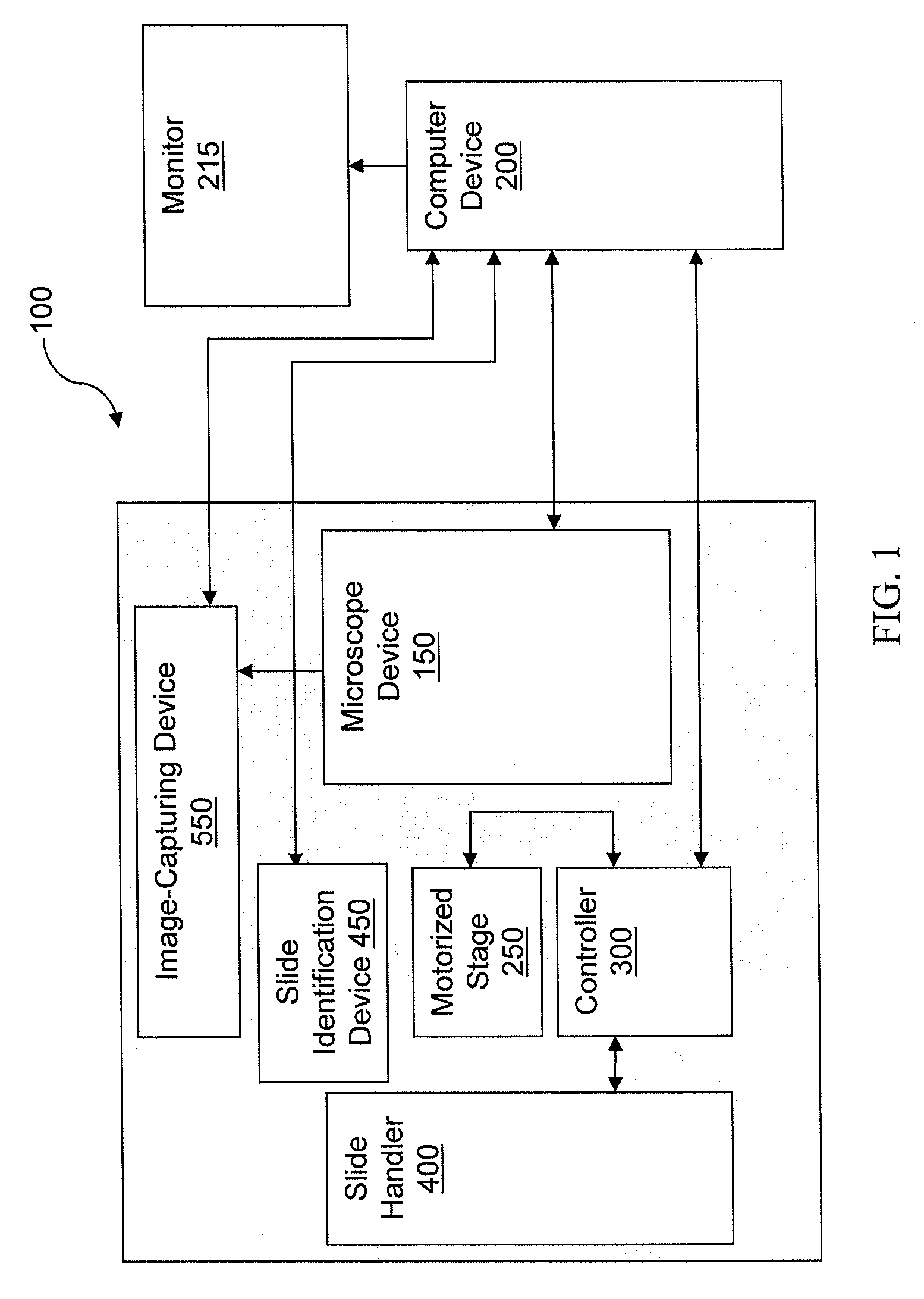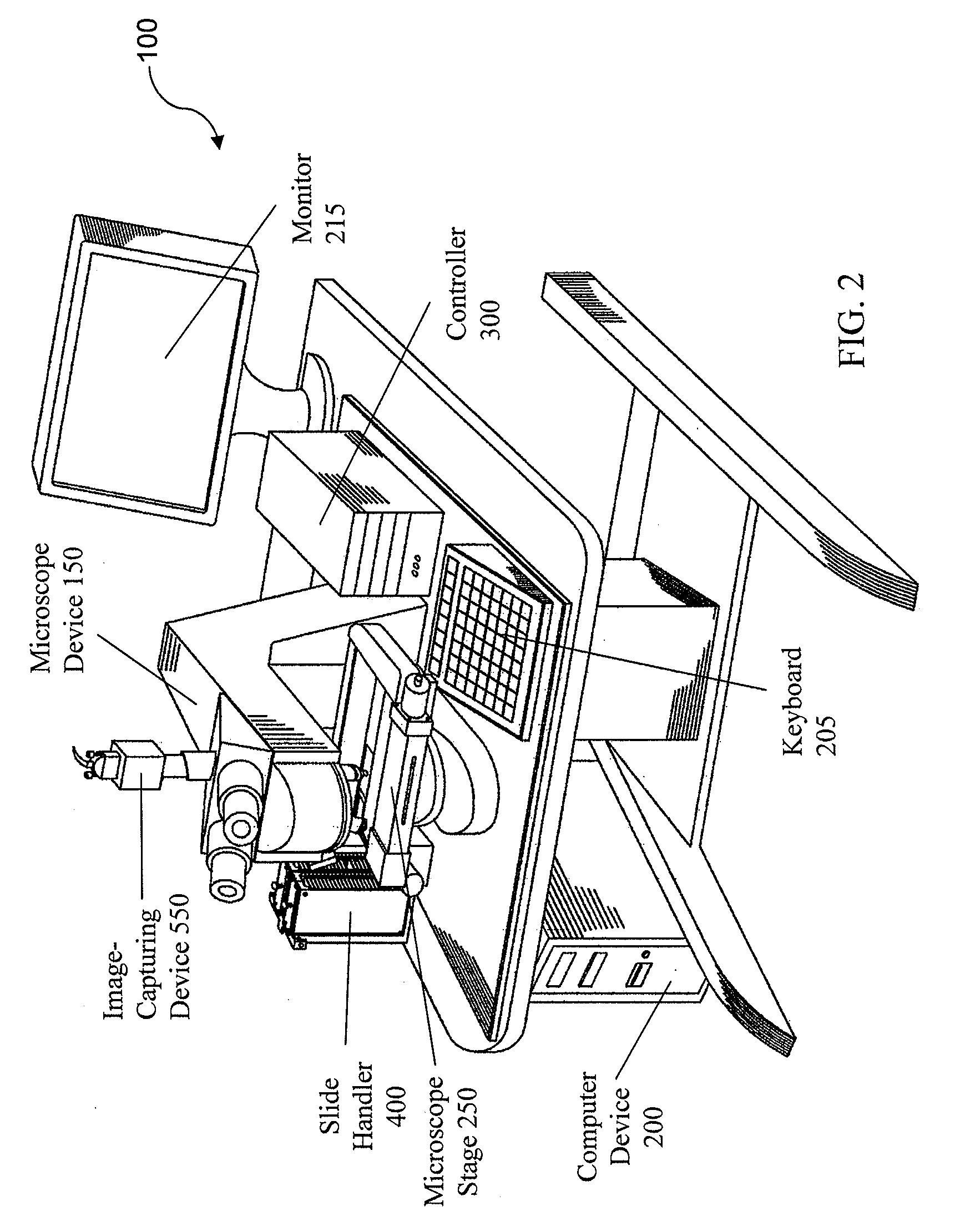Microscopy system having automatic and interactive modes for forming a magnified mosaic image and associated method
a microscopy system and mosaic image technology, applied in the field of microscopy systems having automatic and interactive modes, can solve the problems of unsuitable quantitative evaluation, impractically large scanning time, etc., and achieve the effect of avoiding blurred images and growing faster
- Summary
- Abstract
- Description
- Claims
- Application Information
AI Technical Summary
Benefits of technology
Problems solved by technology
Method used
Image
Examples
Embodiment Construction
[0055]The present inventions now will be described more fully hereinafter with reference to the accompanying drawings, in which some, but not all embodiments of the inventions are shown. Indeed, these inventions may be embodied in many different forms and should not be construed as limited to the embodiments set forth herein; rather, these embodiments are provided so that this disclosure will satisfy applicable legal requirements. Like numbers refer to like elements throughout.
[0056]FIG. 6 shows a block diagram of one embodiment of an automatic-interactive hybrid microscopy system 100 according to the present invention. The system 100 includes a bright field microscope device 150 with automatic Köhler illumination. This means that the microscope illumination settings, such as light intensity and opening diameters of the condenser and field stops can be initially set and stored for each objective mounted on the microscope device 150 to provide optimal Köhler illumination when switchi...
PUM
 Login to View More
Login to View More Abstract
Description
Claims
Application Information
 Login to View More
Login to View More - R&D
- Intellectual Property
- Life Sciences
- Materials
- Tech Scout
- Unparalleled Data Quality
- Higher Quality Content
- 60% Fewer Hallucinations
Browse by: Latest US Patents, China's latest patents, Technical Efficacy Thesaurus, Application Domain, Technology Topic, Popular Technical Reports.
© 2025 PatSnap. All rights reserved.Legal|Privacy policy|Modern Slavery Act Transparency Statement|Sitemap|About US| Contact US: help@patsnap.com



